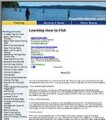 License Type: Private Label Rights
License Type: Private Label Rights  File Size: 388 KB
File Size: 388 KB File Type: ZIP
File Type: ZIP
 SKU: 2469
SKU: 2469  Shipping: Online Download
Shipping: Online Download
Ebook Sample Content Preview:
Have you ever wondered if your spouse, friend, co-worker, or boss was bored with everything that came out of your mouth, but you were not quite able to tell by their body language? Well now, you will be able to tell if what you are saying is falling upon deaf ears. One of the first cues that someone is totally tuning you out is their gaze level. If they are constantly distracted by every little noise or movement you can bet they are not truly paying attention to you, regardless of how many times they tell you they are listening.
Watch for frigidity hands, feet, twitching eyes, all of these are other indicators you do not have not captured your audience attention. A huge clue is when a person begins to yawn or slouch. Granted, yawning is can be an indicator that a person is lacking oxygen, however, when bored, a person will also yawn. If someone straight up falls asleep on you, then you have a real problem with your presentation skills and should consider taking some speech or affective communication classes. Some reasons people may choose to tune out is that the topic you are discussing with them is something they do not want to listen to or they have heard repeatedly from you in the first place.
If a person has no stake in what you are discussing, it is very easy for them to lose interest and become bored quickly. When speaking to a group or on a one on one basis it is important to use body language while you speak. Facial, and hand movements can help to emphasize what you are trying to get across as well as stimulate both the visual and audio senses in your audience. Long drawn out explanations is another quick way to lose your audience attention.
Keep it short and too the point. You do not need to re-explain the same thing 50 different ways to get your point across. Always ask question throughout speaking with anyone. It is a good indicator of the interest level as well.
Often, if a person is bored you may also see closed body language. Closed body language tells you that your audience has totally shut down on you and as far as they are concerned, you are not even in the same room with them any longer even if you are standing directly in front of their face. Teens are excellent example in using closed body language. Closed body language can also present a defensive action for people as well. If you are confronting a person and they exhibit closed body language, it may be because you are scaring them and in order for you to get across what you are trying to say effectively, you should change your approach.
Examples of closed body language are curling up in a ball, rocking, tightly folded arms, almost in a self hug formation, legs tightly crossed or even twisted/intertwined with one another, or with a chair or table leg, and a downward gaze or fixated gaze at an object, wall, or even feet. There may be many reason why you receive closed body language from an individual. Do not automatically assume it is all about you or what you are saying.
- File Size:388 KB
- Total Downloads:3
- License: Private Label Rights
- Category:Graphics, Themes & Templates
- Tags:2009 Ebooks Private Label Rights








